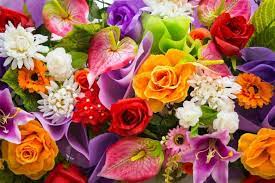Floriography, commonly known as “the language of flowers,” is a fascinating art that dates back centuries. It is a unique form of communication where symbolic meanings are attributed to different types of flowers and their colors. By carefully selecting and arranging flowers, individuals can convey specific messages or emotions without uttering a single word. This elaborate floral code has been used throughout history in various cultures, civilizations, and even literature to express sentiments such as love, friendship, sympathy, and admiration.
The origins of floriography can be traced back to ancient civilizations like Egypt, Persia, and China, where flowers held deep cultural and religious significance. However, it gained widespread popularity during the Victorian era when it became a fashionable way for individuals to express their sentiments discreetly in a society that frowned upon open displays of affection. Floral dictionaries were published to provide guidance on the symbolic meanings of various flowers, enabling people to send hidden messages through bouquets or wear specific blooms to convey their emotions.
Floriography in Literature
Floriography has long captured the imagination of writers and poets, who have used the language of flowers to add depth and symbolism to their works. In literature, flowers often serve as powerful metaphors, representing a range of emotions, themes, and character traits. For example, in William Shakespeare’s play “Hamlet,” Ophelia hands out flowers, each with its unique significance, to represent different facets of her madness and despair. Similarly, in F. Scott Fitzgerald’s iconic novel “The Great Gatsby,” the vibrant yellow color of daisies symbolizes the elusive and unattainable nature of Jay Gatsby’s dream. By incorporating these floral symbols, authors are able to convey complex emotions and ideas without explicitly stating them.
The symbolic use of flowers in literature extends beyond individual works to entire genres and movements. Take, for instance, the Romantic poets of the 19th century, who found inspiration in nature and frequently employed floral imagery to evoke emotional responses. The delicate beauty of the rose often signified love and passion in their verses, while the daffodil came to represent thoughts of joy and hope. Just as readers can use flower meanings as a tool for understanding and interpreting literary works, writers themselves often utilize these symbolic associations to enhance the depth and resonance of their prose. The language of Flower Types thus remains an integral part of the literary world, adding layers of meaning that resonate with readers throughout history.
Floriography, commonly known as “the language of flowers,” is a fascinating art that dates back centuries. It is a unique form of communication where symbolic meanings are attributed to different types of flowers and their colors. By carefully selecting and arranging flowers, individuals can convey specific messages or emotions without uttering a single word. This elaborate floral code has been used throughout history in various cultures, civilizations, and even literature to express sentiments such as love, friendship, sympathy, and admiration.
Floriography has long captured the imagination of writers and poets, who have used the language of flowers to add depth and symbolism to their works. In literature, flowers often serve as powerful metaphors, representing a range of emotions, themes, and character traits. For example, in William Shakespeare’s play “Hamlet,” Ophelia hands out flowers, each with its unique significance, to represent different facets of her madness and despair. Similarly, in F. Scott Fitzgerald’s iconic novel “The Great Gatsby,” the vibrant yellow color of daisies symbolizes the elusive and unattainable nature of Jay Gatsby’s dream. By incorporating these floral symbols, authors are able to convey complex emotions and ideas without explicitly stating them.
The symbolic use of flowers in literature extends beyond individual works to entire genres and movements. Take, for instance, the Romantic poets of the 19th century, who found inspiration in nature and frequently employed floral imagery to evoke emotional responses. The delicate beauty of the rose often signified love and passion in their verses, while the daffodil came to represent thoughts of joy and hope. Just as readers can use flower meanings as a tool for understanding and interpreting literary works, writers themselves often utilize these symbolic associations to enhance the depth and resonance of their prose. The language of flowers thus remains an integral part of the literary world, adding layers of meaning that resonate with readers throughout history.







